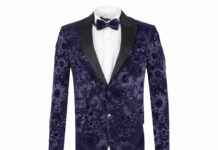Toni Dash’s pantry has half a dozen Mason jars on its top shelf. Clear liquid is almost invisible in some of the jars. Some, such as the jar of vodka with ripe pear and generous amount of spices, are filled with vibrant colors that make cocktails look as delicious as they taste.
Dash is not a professional bartender. She is a recipe developer. She discovered that you can make delicious, complex cocktails at home by mixing liquors with fruits, herbs and spices.
It’s easy to believe that it would be hard to make a craft cocktail at home when you’re being served a freshly made cocktail. You can create a variety of nuanced spirits by adding additional flavors to your favorite vodka, bourbon, or Gin.
It’s easy: Let the flavoring ingredients steep in alcohol for hours, days or even weeks if you want to create something really intense. After straining the ingredients, return the alcohol to the bottle or place it in a Mason Jar.
There are many ingredients that can be used. Dash, who is from Boulder, Colorado and blogs at BoulderLocavore.com has tried everything from dried gojiberries to candy canes.
She says that her inspiration is seasonal. But there are no limits. It doesn’t matter how you look at it, just do it.
This is what infusing can be fun, aside from the delicious drink at the end. Mixing flavors is what it’s all about. Mixology is about taking bits of knowledge you have from cooking and applying it to mixology. It’s also about understanding the subtleties of nature – which flavors work together and which ones clash.
Josh Williams was inspired by seasonal fruit to infuse liquors over a decade ago. Infusing fresh summer peaches with bourbon was a hobby he started in college. He continued to practice the craft when he moved from California to New York City.
Eric Prum, who co-runs the W&P Design food and drink site, recalls the reactions Williams got when he would pour his fruit-infused Bourbon into jars before giving it to friends. It was a simple process that could produce a unique ingredient that allowed people to mix complex cocktails at home.
«It was mind-melting for people that you could take something that was really wonderful like a great Bourbon and really elevate it,» Prum says. Williams, a longtime collaborator, wrote the book «Infuse» years later.
Prum and Dash also recommend infusing syrups. This allows you to easily make multi-layered cocktails: one infused liquor and one infused syrup, plus a little bit of fresh juice.
Derek Ott, a Pittsburgh bartender, says that more people are now trying to make unique cocktails at home after the year of intermittent quarantines.
He says, «They are digging deep into creativity and trying to find out how they can reproduce that syrup, that tincture, or that infusion.»
You can infuse your home with as little as a small bottle of inexpensive Bourbon and a cinnamon stick. A basic bottle of rye can be enhanced with caraway seeds. Cacao nibs can transform a liqueur into a multiflavored dessert drink. A few chili peppers or sweet basil can transform any vodka.
It’s easiest to flavor liquors and syrups with loose tea leaves or ground coffees. They are already designed to infuse water.
Ott said that he has made a strawberry-tomato/basil syrup. «You get the sweetness of the strawberry but you also get that acidic and vegetal taste from tomato.» Basil’s flavor is great with vodka or Gin, Ott says.
Some ingredients don’t work well together. It’s possible to make your own infusions of ingredients you have at home, and it won’t cost much to try new things.
Dash said, «I have just tried all these different things.» It’s often good. Sometimes it’s not.
Both Ott and Dash recommend using low-priced liquor brands. Dash states that it is a good idea to get something cheaper because the infusion will enhance the flavor. For best results, you should avoid low-quality spirits.
You’ll be amazed at the results, including a new range of cocktails and something you may not have thought possible.




















